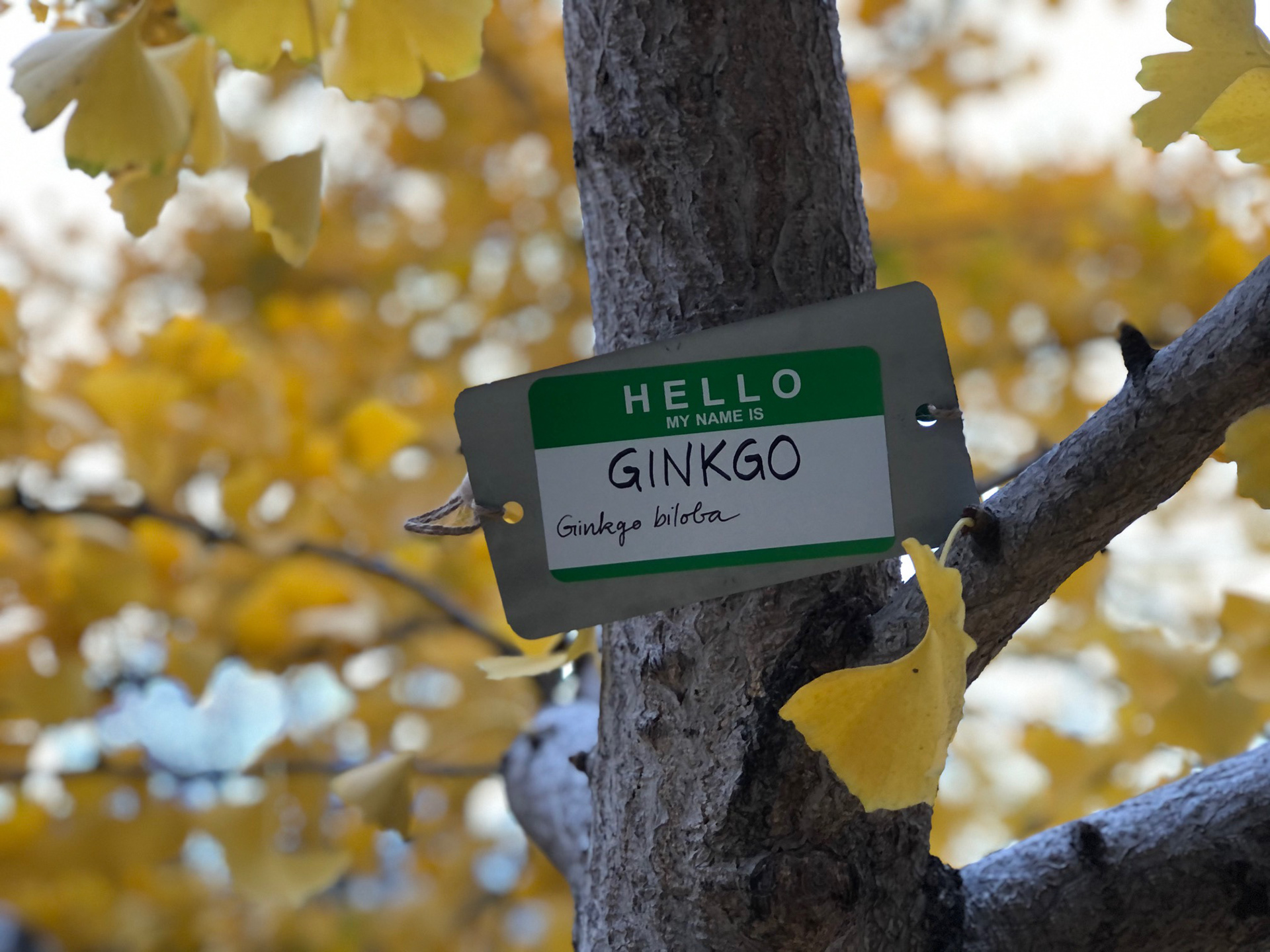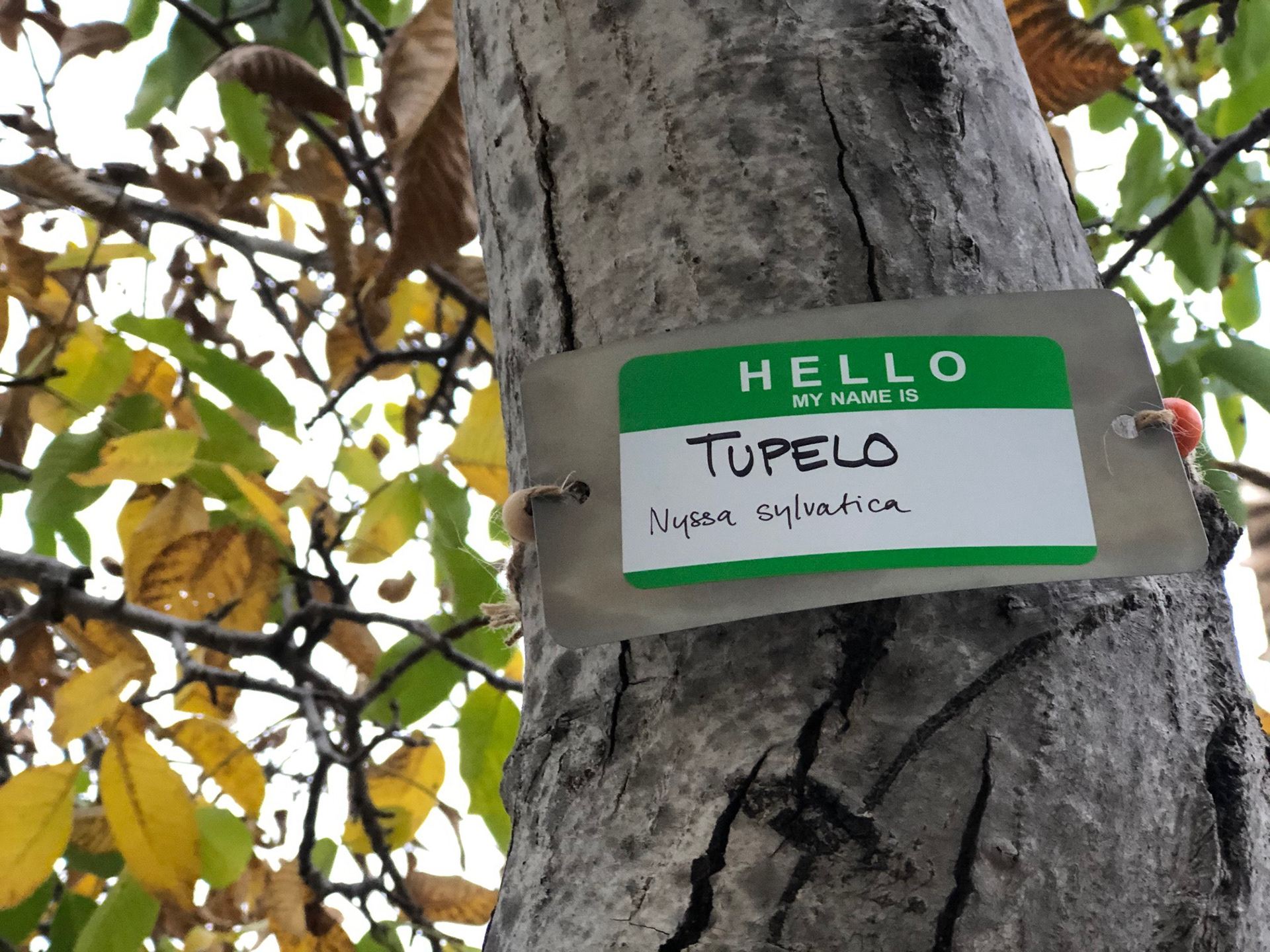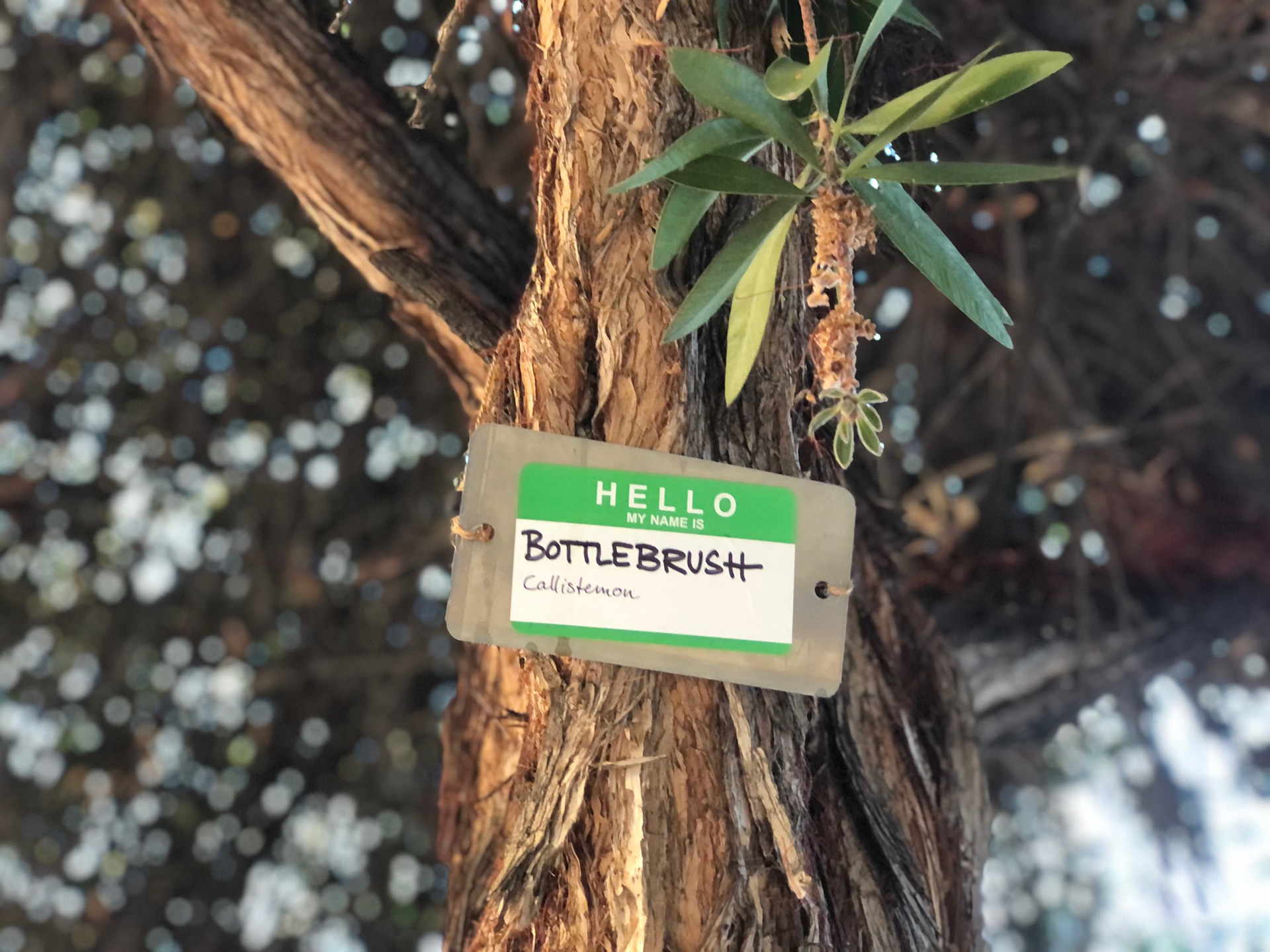NEIGHBORS II: Meet Your Street Trees
Installation, Lakeside Apartments District, Oakland California
Street trees are vital to a neighborhood’s health. They fulfill a variety of critical functions that often go unrecognized. Benefits of street trees include carbon sequestration, shade and cooling, stress reduction, wildlife habitat, runoff reduction, and air filtration.
Downtown Oakland has experienced a significant construction boom in the past decade. In the process, the area has lost a significant number of rookery and shade trees. Neighbors II is a hyper-local research and education project that takes inventory of what we’ve lost (43 street trees since 2006), what’s left, and what we can learn to build a livable future. To introduce neighbors to the abundance that surrounds us, street trees are outfitted with a nametag and a QR code that leads to more information.
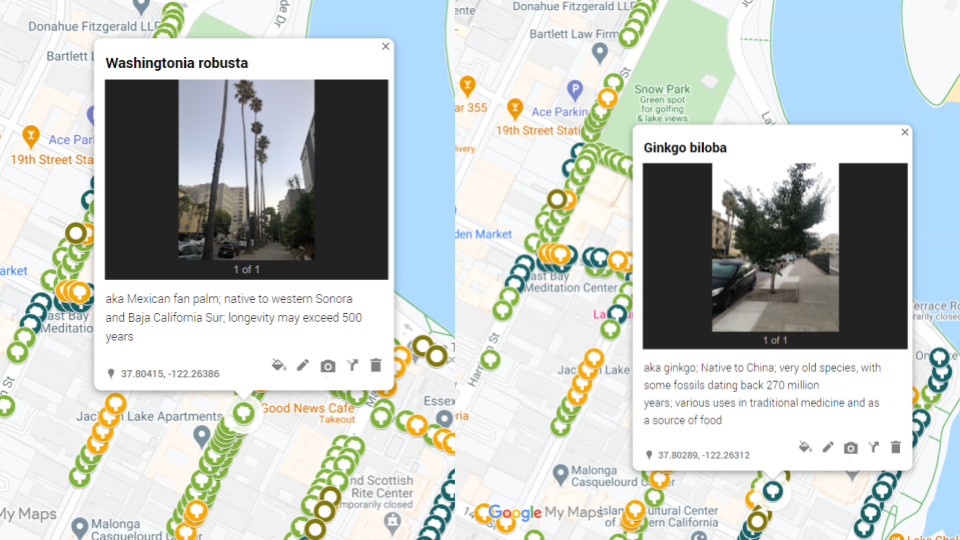
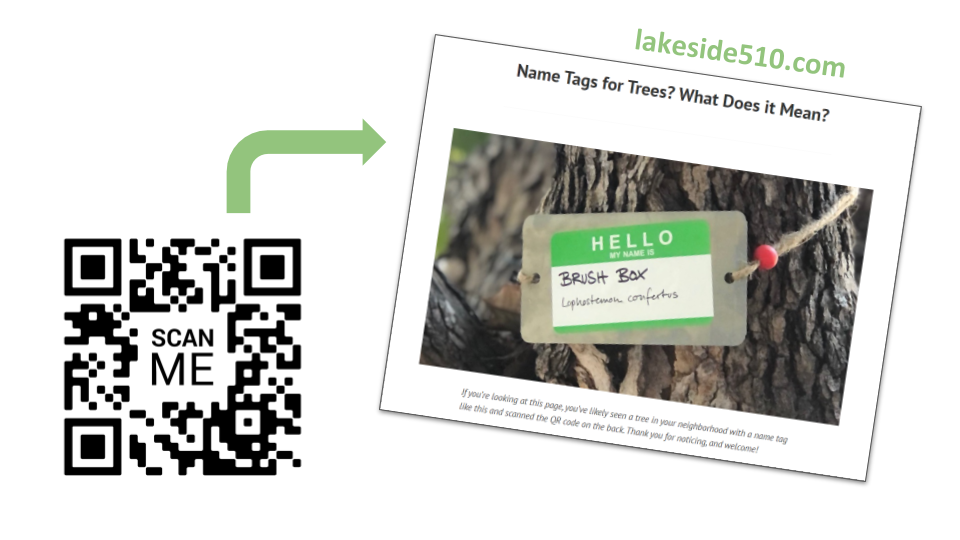
The current installation covers downtown Oakland’s Lakeside Apartments District, the most densely populated neighborhood in Oakland. Neighbors II mapped and identified more than 200 Lakeside street trees, including:
21 species of tree. The top five trees in Lakeside are Sweetgum, Brush Box, Ginkgo, London Plane, and the Mexican Fan Palm.
21 species of tree. The top five trees in Lakeside are Sweetgum, Brush Box, Ginkgo, London Plane, and the Mexican Fan Palm.
40% of Lakeside trees are native to the Americas, 23% are native to Australia, 18% are from Asia, 3% from Europe, and less than 1% from Africa.
61% of Lakeside trees are deciduous and 39% are evergreen trees.
A sustainable future is rooted in our soil. Taking care of street trees, and planting in empty tree wells, directly contributes to a healthier neighborhood.
Learn more at lakeside510.com.
